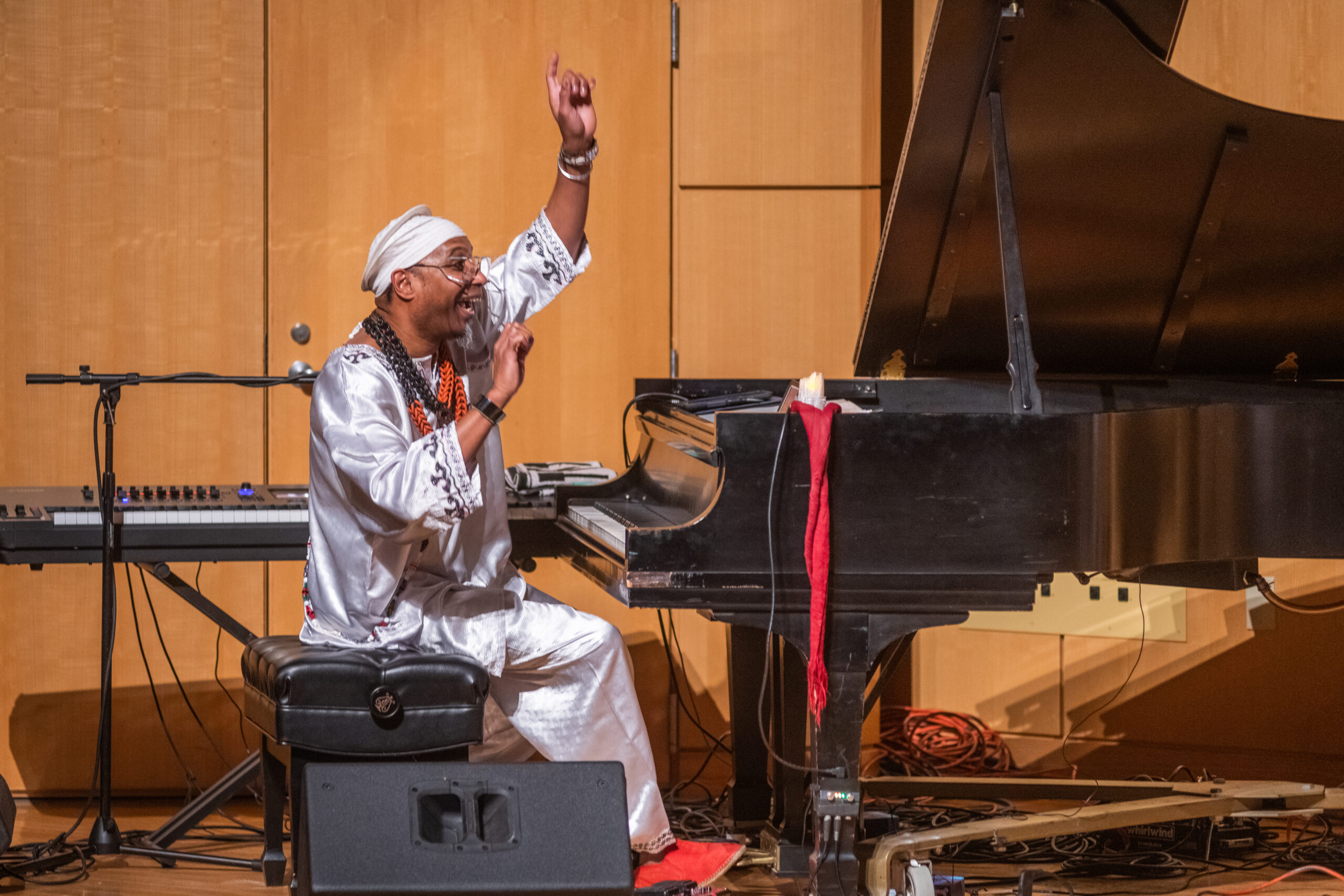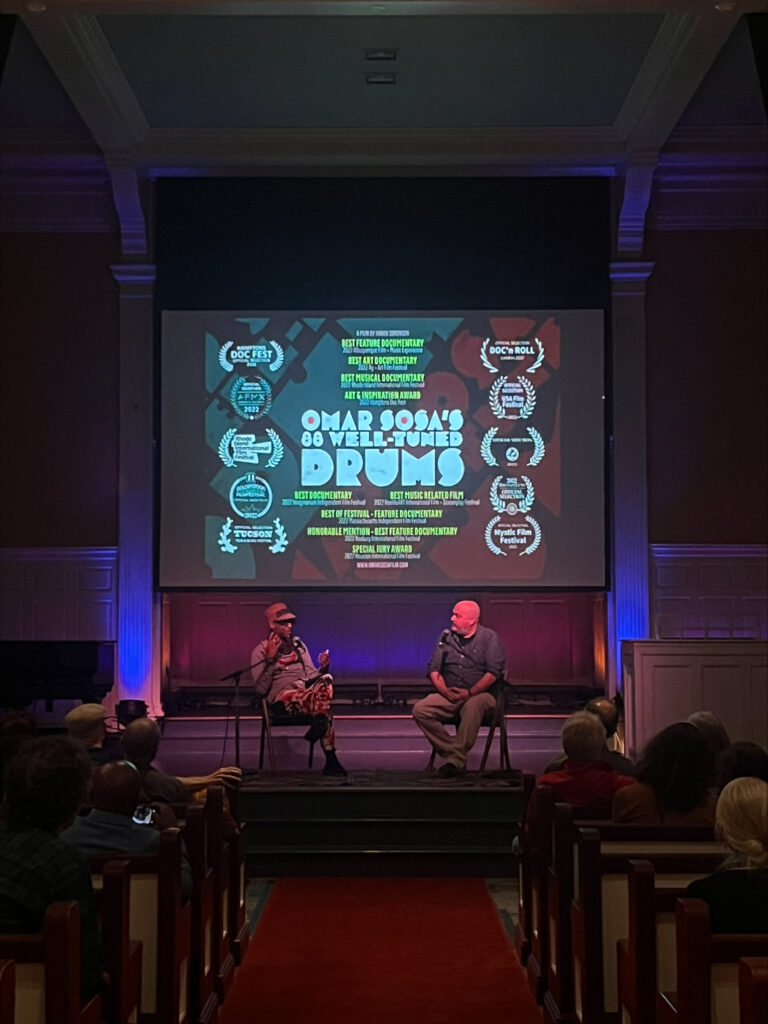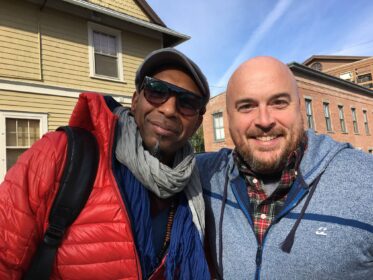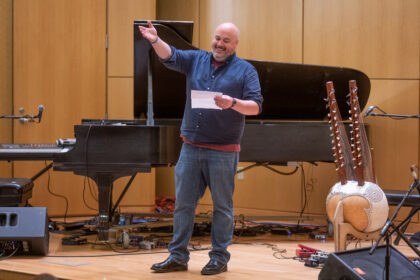Fusing music and film

Pianist Omar Sosa performed at Clark as part of the SUBA trio.

In a blending of sight and sound, Screen Studies Professor Soren Sorensen’s digital filmmaking class recently attended a screening of “Omar Sosa’s 88 Well-Tuned Drums,” a documentary directed, written, and produced by Sorensen. The event was held at the Bombyx Center for Arts & Equity in Northampton, Massachusetts.
The film celebrates the artistry of Grammy-nominated Cuban pianist and composer Omar Sosa, whose dynamic rhythms and contemporary compositions form the beating heart of Sorensen’s documentary. Known for his deeply spiritual approach to music, Sosa’s blend of Afro-Cuban rhythms, jazz improvisation, and global musical influences has captivated audiences worldwide.
Sorensen’s approach to Sosa’s life is intentionally nonlinear. He chronicles Sosa’s rising popularity in San Francisco’s jazz scene while breaking the film into distinct chapters, each highlighting different stages and styles of the musician’s career, giving the film a distinct rhythm of its own.
Soren’s emphasis on the creative and spiritual processes behind Sosa’s arrangements gives way to a blending of visual and auditory elements that brings the artists’ mediums to life in a shared, expressive vision.
“For me, it was a new way of experiencing music through film,” said Snow Larish ’27, describing it as a “fusion” in which Sosa’s soundscapes and Sorensen’s visual storytelling intertwined, each enhancing the other in a unique harmony.
The film has won numerous awards, including Best Feature Documentary at the 2022 Albuquerque Film+Music Experience, Best Musical Documentary at the 2022 Rhode Island International Film Festival, and the Spotlight Gold Award at the 2022 Spotlight Documentary Film Awards.
The post-screening Q&A session offered students an even more intimate look into the collaborative process between Sosa and Sorensen. Throughout the discussion, the two artists shared insights into how music and film converged to create a narrative that authentically depicted Sosa’s Cuban roots and his global journey as an artist.
Sosa captivated the students with his reflections on balancing cultural identity and creative freedom. When one student asked how he reconciles being viewed as a virtuoso by a variety of audiences, Sosa replied, “Different ensemble, different instruments, same poetry, same philosophy.” He went on to explain how his music is driven by energy and openness, an approach that Sorensen mirrored in his filmmaking.
Sorensen added that working with Sosa inspired him to adopt a more improvisational approach in his documentary work, doubling down on the value of leaving space for spontaneity, just as Sosa does in his music.
Through the talkback, the Clark students gained a rare, unfiltered view of how two distinct art forms can come together to tell a deeply personal story. Sorensen and Sosa’s partnership in the film, and their exchanges on the Northampton stage, accentuated the importance of that collaboration.




